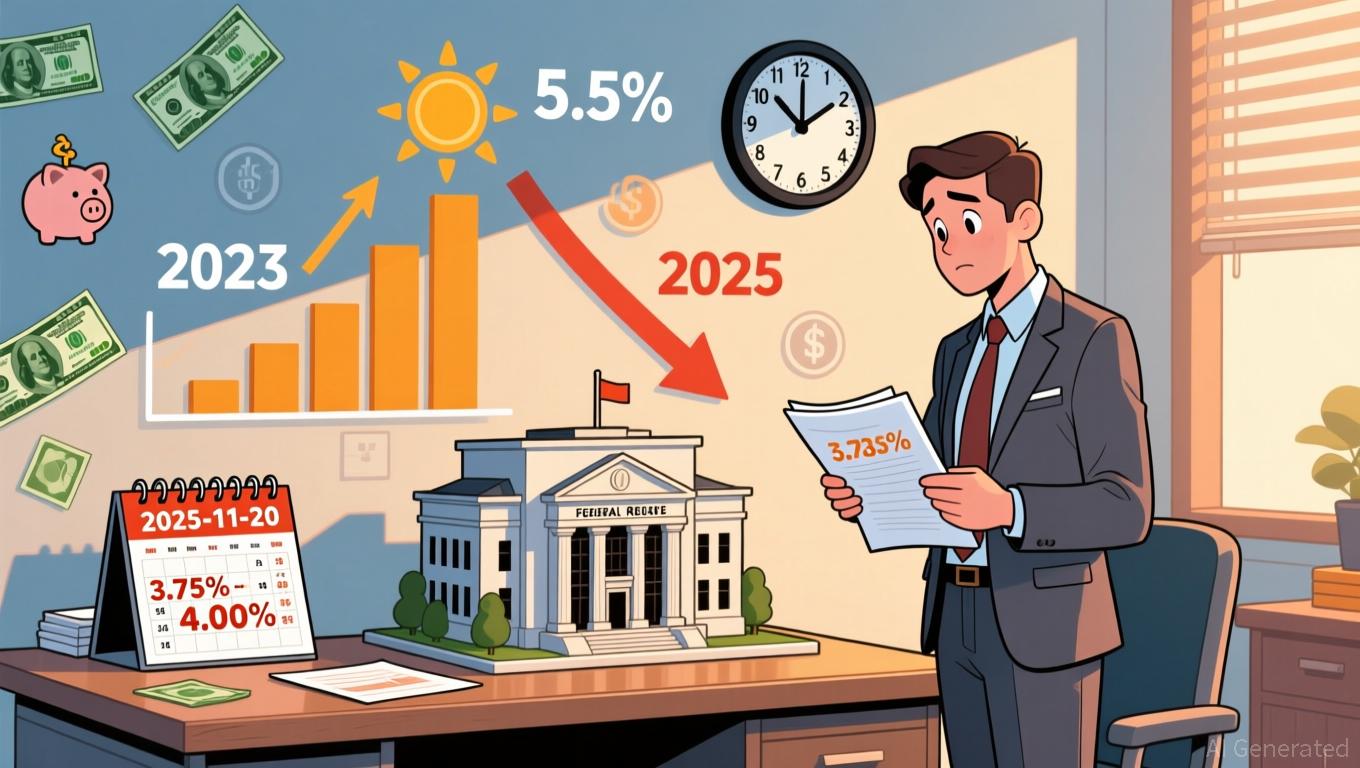The Growth of Careers in Public Interest Law: An Expanding Field with Opportunities for Impact Investment
- U.S. public interest law faces rising demand, with 92% of low-income civil legal needs unmet in 2025, driving 35,600 annual lawyer openings through 2033. - Salary disparities persist: civil legal services lawyers earn 14% less than peers at entry-level, widening to 19% with experience, contrasting private practice's $225K salaries. - Debt relief programs like PSLF ($4.2B forgiven) and grants (TIG, Pro Bono Innovation Fund) enhance financial viability, while SROI frameworks quantify social returns up to 1
Financial Viability: Addressing Pay Disparities and Funding Solutions
Although careers in public interest law are often praised for their positive social contributions, concerns about financial stability remain. According to NALP’s 2023 Public Service Attorney Salary Survey, there are notable pay differences: in 2023, new civil legal services attorneys had a median salary of $64,200, which is lower than the $69,500 median for other entry-level public service lawyers
Nevertheless, new funding strategies are helping to reduce financial obstacles.

Social Return: Measuring Enduring Societal Benefits
Beyond financial considerations, public interest legal work delivers significant social value, as shown by Social Return on Investment (SROI) models. SROI assesses non-monetary outcomes—such as better health, reduced disparities, and stronger civic participation—by assigning financial values to these impacts.
These examples demonstrate the sector’s ability to create tangible social improvements. For instance,
Balancing Risks and Rewards
Despite its advantages, the public interest legal field faces obstacles. Pay disparities can discourage some law graduates, especially those burdened with student loans. Moreover, funding for legal aid organizations often depends on political and economic factors, leading to unpredictability. For example,
Still, these challenges are offset by the sector’s distinctive capacity to produce lasting social value. The CAP and MHSI cases show that investing in public interest law pays off not only financially but also by reducing inequality, improving public health, and reinforcing democratic systems. For those interested in impact investing, this combination of measurable social results and strategic financial tools like PSLF and SROI makes public interest law an attractive area for ongoing involvement.
Conclusion: A Sector with Dual Imperatives
The growing popularity of public interest legal careers signals a broader movement toward aligning professional goals with societal priorities. While pay gaps and funding uncertainties persist, the sector’s financial outlook is increasingly bolstered by loan forgiveness programs and targeted grants. More importantly, SROI frameworks offer a powerful way to measure the sector’s far-reaching effects, from easing healthcare demands to promoting fairness. For both investors and policymakers, the takeaway is clear: public interest law is not just a career path, but a strategic investment in building a fairer and more resilient society.
Disclaimer: The content of this article solely reflects the author's opinion and does not represent the platform in any capacity. This article is not intended to serve as a reference for making investment decisions.
You may also like
Post-peak CD returns threatened by Fed reductions—investors hurry to lock in rates
- CD rates peaked at 4.20% APY in late 2025 but declined as Fed rate cuts reduced federal funds to 3.75%-4.00%. - Short-term 12-month CDs remain competitive at 3.92% APY, outperforming longer-term products amid expected further Fed cuts. - Analysts urge investors to lock in current rates before December's anticipated third cut, as 2025's three reductions follow 2024's three cuts. - Strategic allocation to high-APY CDs maximizes returns, with $100k in 12-month terms generating $3920 vs. $3600 in 24-month te

Bitcoin News Update: Federal Reserve's Shift to Dovish Stance Sparks Digital Asset Rally Amid Supply Constraints, BTCM's Second Phase Poised to Capitalize
- Fed ends quantitative tightening, boosting markets as Bitcoin Munari (BTCM) enters $0.22 Phase 2 presale. - Dovish pivot with inflation below 2% drives risk-on sentiment, pushing December rate cut odds above 70%. - BTCM's fixed-supply model (21M tokens) and 2,627% projected return align with scarcity-driven crypto trends. - Structured presale pricing ($0.10→$0.22) and Solana's $58M daily ETF inflows highlight institutional adoption.

Bitcoin News Update: Report Reveals Bitcoin’s Future Depends on Macroeconomic Transparency and Trust from Institutions
- Bitcoin's 36% October drop sparks debate over recovery potential amid institutional sell-offs and ETF divestment risks. - Institutional holders (1,000+ BTC) reduced exposure by 1.5%, contrasting retail exits, mirroring 2019-2020 redistribution patterns. - Key support at $89,400-$82,400 and Fed rate cut odds (69.3%) highlight macroeconomic influence on Bitcoin's risk-on/risk-off dynamics. - Whale accumulation (100-10,000 BTC) contrasts retail selling, but 1,000-10,000 BTC cohort distribution remains a bea

The Growing Interest in Socially Responsible Investing (SRI) within Legal and Public Interest Fields
- SRI is shifting toward education and legal sectors to address systemic inequities, merging financial returns with social impact. - UC Berkeley's Public Interest Scholars Program funds law students for public service, ensuring measurable societal benefits through accountability frameworks. - Digital tools and ETFs like ESGU/VFTAX enhance SRI transparency, enabling investors to track real-time social impact in education and legal equity initiatives. - Institutional commitments to IDEAA principles and partn
